I have successfully set up tabs in the Action Bar using the following example from Google themselves at http://developer.android.com/resources/samples/ApiDemos/src/com/example/android/apis/app/FragmentTabs.html as a bases. My code looks like so:
public class Main extends SherlockFragmentActivity {
/** Called when the activity is first created. */
@Override
public void onCreate(Bundle savedInstanceState) {
super.onCreate(savedInstanceState);
getSupportActionBar().setNavigationMode(ActionBar.NAVIGATION_MODE_TABS);
ActionBar.Tab tab1 = getSupportActionBar().newTab();
tab1.setIcon(R.drawable.ic_tab_example_selected);
tab1.setTabListener(new TabListener<Tab1>(this, "A", Tab1.class));
getSupportActionBar().addTab(tab1);
ActionBar.Tab tab2 = getSupportActionBar().newTab();
tab2.setIcon(R.drawable.ic_tab_example_selected);
tab2.setTabListener(new TabListener<Tab2>(this, "B", Tab2.class));
getSupportActionBar().addTab(tab2);
ActionBar.Tab tab3 = getSupportActionBar().newTab();
tab3.setIcon(R.drawable.ic_tab_example_selected);
tab3.setTabListener(new TabListener<Tab3>(this, "C", Tab3.class));
getSupportActionBar().addTab(tab3);
ActionBar.Tab tab4 = getSupportActionBar().newTab();
tab4.setIcon(R.drawable.ic_tab_example_selected);
tab4.setTabListener(new TabListener<Tab4>(this, "D", Tab4.class));
getSupportActionBar().addTab(tab4);
}
@Override
public boolean onCreateOptionsMenu(Menu menu) {
MenuInflater inflater = getSupportMenuInflater();
inflater.inflate(R.menu.menu, menu);
return true;
}
public class TabListener<T extends Fragment> implements ActionBar.TabListener {
private Fragment mFragment;
private final SherlockFragmentActivity mActivity;
private final String mTag;
private final Class<T> mClass;
/** Constructor used each time a new tab is created.
* @param activity The host Activity, used to instantiate the fragment
* @param tag The identifier tag for the fragment
* @param clz The fragment's Class, used to instantiate the fragment
*/
public TabListener(SherlockFragmentActivity activity, String tag, Class<T> clz) {
mActivity = activity;
mTag = tag;
mClass = clz;
}
/* The following are each of the ActionBar.TabListener callbacks */
public void onTabSelected(Tab tab, FragmentTransaction ft) {
// Check if the fragment is already initialized
if (mFragment == null) {
// If not, instantiate and add it to the activity
mFragment = Fragment.instantiate(mActivity, mClass.getName());
ft.add(android.R.id.content, mFragment, mTag);
} else {
// If it exists, simply attach it in order to show it
ft.attach(mFragment);
}
}
public void onTabUnselected(Tab tab, FragmentTransaction ft) {
if (mFragment != null) {
// Detach the fragment, because another one is being attached
ft.detach(mFragment);
}
}
public void onTabReselected(Tab tab, FragmentTransaction ft) {
// User selected the already selected tab. Usually do nothing.
}
}
}
With this I have multiple tabs that switch between the different fragments in each tab. However, my problem starts when in a tab and changing fragments from within a tab. This is the problem:
When I am in Tab 1, I swap the initial fragment loaded in the tab with a new fragment. I then go to Tab 2 which shows it's initial fragment. However, the view of the fragment swapped to in Tab 1 still shows behind Tab 2 fragment:


This is code I am currently using to change the fragment from within Tab 1:
// Create new fragment and transaction
FragmentTransaction transaction = ctx.getFragmentManager().beginTransaction();
transaction.setCustomAnimations(R.anim.slide_in_left, R.anim.slide_out_right);
// Replace whatever is in the fragment_container view with this fragment,
// and add the transaction to the back stack
transaction.replace(container, fragment, tag);
if(addToBackStack)
transaction.addToBackStack(tag);
// Commit the transaction
transaction.commit();
All this is being accomplished via ActionBar Sherlock and Google v4 support library.